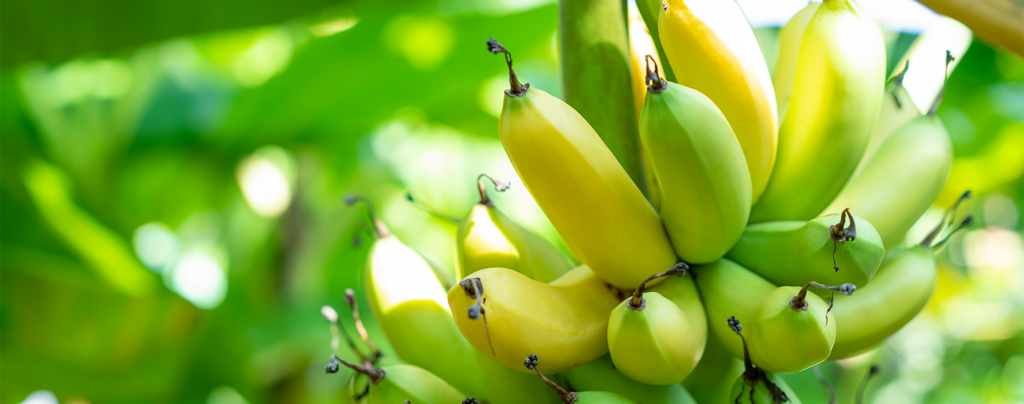Bananas are notoriously hungry plants, requiring loads of nutrients from the soil, and the best way to ensure they get their fair share of food is by growing them in a banana circle. This is a popular permaculture method—or rather, an approach to gardening that allows plants to go through their natural processes with as little interference as possible, allowing them to thrive as they do out in the wild.
If you’d like to know how to grow a banana circle in Fort Lauderdale, take a look through this guide to banana circle permaculture so you can enjoy bushels of these delicious fruits grown right at home!

What Is A Banana Circle?
As you can probably guess, a banana circle involves growing these popular yellow fruits in a circle. However, there’s a lot more to it than that. To create a constant food source to feed your plants, you’ll need to dig a big pit in the middle of the circle to fill with organic materials like straw, dropped leaves, compost and mulch, which will heat up and break down to quickly deliver nutrients to the plant roots.
Companion planting is also a major component of permaculture, so adding certain plants that have mutual benefits for the other plants in the circle will result in better crop yield, and less of a need to intervene. It’s a perfect example of putting in a little extra work and planning in the beginning, so you can kick back and enjoy the (literal) fruits of your labor with less effort in the long run.

Banana Companion Plants
There are all sorts of different plants that can be added into the circle to help the other plants grow stronger and healthier. Some popular additions include:
- Sweet Potatoes: These low-growing root vegetables provide a leafy ground cover that shields the soil, helping to prevent weeds and retain moisture. They’re climbers, so they’ll naturally creep up your banana plants—no need for any trellises! Since bananas only grow and produce fruit for one season, when you dig up your spent plants, you can pull out some sweet potatoes in the process. The greens are also edible, so you can harvest them for salads all year long—unlike most salad greens, which don’t handle our hot summers very well.
- Lemongrass: A natural pest deterrent, this aromatic culinary herb will keep annoying bugs at bay, while also helping to block weeds from forming.
- Taro: This root vegetable loves the shade, so it will be right at home underneath the big canopy of leaves above. Similarly to sweet potatoes, it makes a good living mulch ground cover to block sunlight from drying out the soil and germinating weeds.
- Comfrey: Technically, this flowering herb is only meant to be grown up to USDA zone 9, but it also thrives in the shade, so you may have some luck growing it in the circle underneath the leafy canopy. It deposits plenty of minerals and nutrients into the soil, which your hungry banana plants will gladly soak up. It’s also a fantastic compost activator, so tossing some leaves into the pit will help speed up the breakdown process.

Creating A Banana Circle Garden
Though sizes can vary, most permaculturists agree that the best pit size for your compost and mulch is six feet wide and three feet deep. Find an area to dig your pit that isn’t close to any plumbing or power lines. You might need a sharp shovel to break through some densely packed soil.
Take all the soil that you’ve dug up from the pit and mound it up all around to create a risen ring. This is where you will plant all of your bananas and other companion plants for the circle. For the first few months, while your plants are still getting established, it might be worth putting up some chicken wire fencing to keep curious critters out of the pit.
Since you probably don’t have enough compost to fill the entire pit to begin with, you can use materials like old leaves and straw. Try to avoid getting any weeds in the pit. The pit will need to stay consistently moist, so try to get into the habit of collecting wastewater from the kitchen and pouring it in. Toss all your compostable kitchen scraps into the pit, and any other debris that may naturally fall from trees and plants in your yard. All of this will leave you with less waste for you to manage, and more food for your plants!
You can continue to propagate your banana plants from the suckers they produce, so you won’t have to worry about not having any more plants after one growing cycle. There are two types of suckers: sword suckers and water suckers. The water suckers don’t grow as fast and won’t be of much use to you, so you can pull those ones out and toss them in the pit. They have broader leaves, whereas the sword suckers have pointy sword-like leaves. Sword suckers are the ones you’ll want to pop off and re-plant, so keep an eye out for them and consider temporarily keeping them in a pot if you don’t have enough space in the circle for them yet.
If you have any questions about creating your own banana circle, or if you need some seeds or supplies to help you get started, stop by Living Color Garden Center, and we’ll be happy to help you get started!

